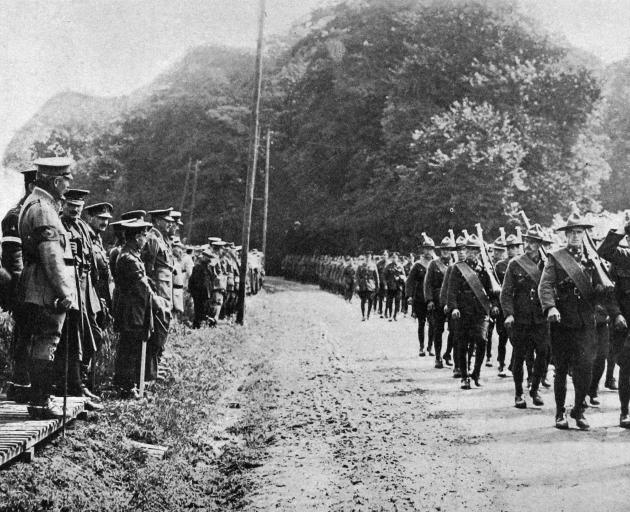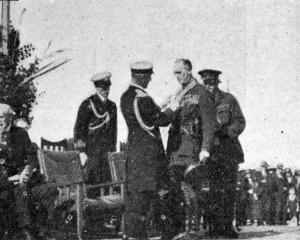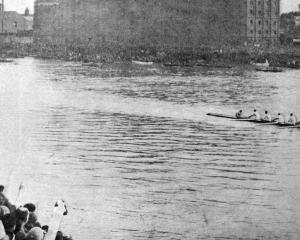
It was over practically the same ground as the last, only a bit further advanced. It rained practically all the time we were in, and we had a crook spin both as regards work and casualties. We were wet through from the time we started until the time we finished.
The first night in, Fritz put over gas, and we had our helmets on for about three hours. I am glad to say I missed being gassed, but a good many of our crowd were, somewhere about 20 out of 36 of our section. What with killed, wounded, gassed, trench feet, etc., I do not think there are many of the --- left.
We were right up in amongst it, and what a carry. Five miles or more. Six men to a stretcher, over shell holes for a start and then down what was once a road. (you will have seen the name of this road in the papers many a time.) It was mud or slush up to the knees all the way.- Anonymous soldier's letter.
Grand Hotel facade
Sir,- I have read with surprise a glowing account of the so-called renovation of the exterior of the fine facade of the Grand Hotel. Anyone who has travelled in the Old World could not fail to become impressed with the beauties of weathered stone work.
Take, for instance, Canterbury Cathedral, or the Oxford Colleges. Imagine for a moment the uproar that would be created if the authorities in these places allowed an ambitious salesman to persuade them to paint their buildings and thereby destroy the charm of their structures for all time.
. - I am, etc.,Traveller.
Shining cuckoo
Through the generosity of Mr Kingston, manager of the West Dome Station, Mossburn, the Southland Museum has become possessed of a fourth, and particularly fine, specimen of the shining cuckoo (states the Southland Times).
This little bird, which winters in New Caledonia, arrives in New Zealand in September-October - in the North Island first. It breeds in New Zealand, and leaves the southern parts of the country during the first two weeks of January, although the young birds sometime remain considerably longer.
The times of arrival and departure of the old birds in both North and South Islands are wonderfully regular. The specimen forwarded by Mr Kingston is a young bird.
Rabbit increase
The Cromwell Argus states that rabbits appear to have kept pace with the favourable season and have increased to a remarkable degree in most of the district.
- ODT, 18.1.1917.
COPIES OF PICTURE AVAILABLE FROM ODT FRONT OFFICE, LOWER STUART ST, OR WWW.OTAGOIMAGES.CO.NZ












